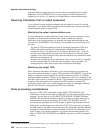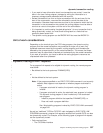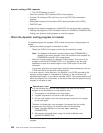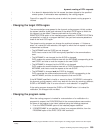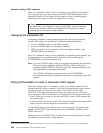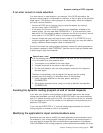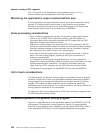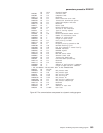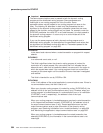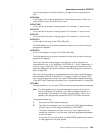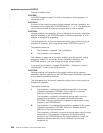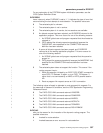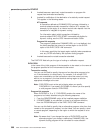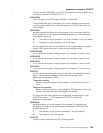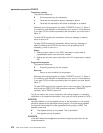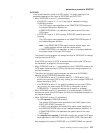
Important
The same communications area is passed to both the dynamic routing
program and the distributed routing program. Some parameters are
meaningful to one routing program but not to the other. Some
parameter-values may be passed to one routing program but never to the
other. The following list describes in detail only the parameters that are
significant to the dynamic routing program; parameter-values that are never
passed to the dynamic routing program are not listed. For example, under the
DYRFUNC parameter the value X'5' is not listed because it is never passed to
the dynamic routing program—it occurs only on a route initiate call to the
distributed routing program.
If you use the same program as both a dynamic routing program and a
distributed routing program, for descriptions of the parameters and values that
are significant on distributed routing calls refer to “Parameters passed to the
distributed routing program” on page 585.
DYRABCDE
is the abend code returned when a routed transaction or program-link request
abends.
DYRABNLC
is an abnormal event code, or null.
This field is significant when the dynamic routing program is invoked for
termination of a routed request. Any value other than null indicates that an
abnormal event,
other than a transaction abend
, has occurred in the region to
which the request was routed. Your routing program should not route further
requests to the same region until the cause of the error has been investigated
and rectified.
This field is intended for use by CICSPlex SM.
DYRACMAA
is the 31-bit address of the routed application’s communications area. If there is
no communications area, this field is set to null.
When your dynamic routing program is invoked for routing (DYRFUNC=0), the
address is that of the input communications area (if any). Likewise, when your
routing program is invoked because of a route-selection error or for notification
(DYRFUNC=1 and 3, respectively), the address is that of the input
communications area.
When your routing program is invoked because a previously-routed transaction
or link request has terminated normally (DYRFUNC=2), the address is that of
the output communications area (if any). Routed applications can use their
output communications area to pass information to the dynamic routing
program—see “Receiving information from a routed transaction” on page 556
and “Monitoring the application’s output communications area” on page 562.
When your routing program is invoked because the routed transaction has
abended (DYRFUNC=4), the information in the communications area is not
meaningful.
parameters passed to DFHDYP
564
CICS TS for OS/390: CICS Customization Guide
|
|
|
|
|
|
|
|
|
|
|
|
|
|
|
|
|
|
|
|
|
|
|
|
|
|



